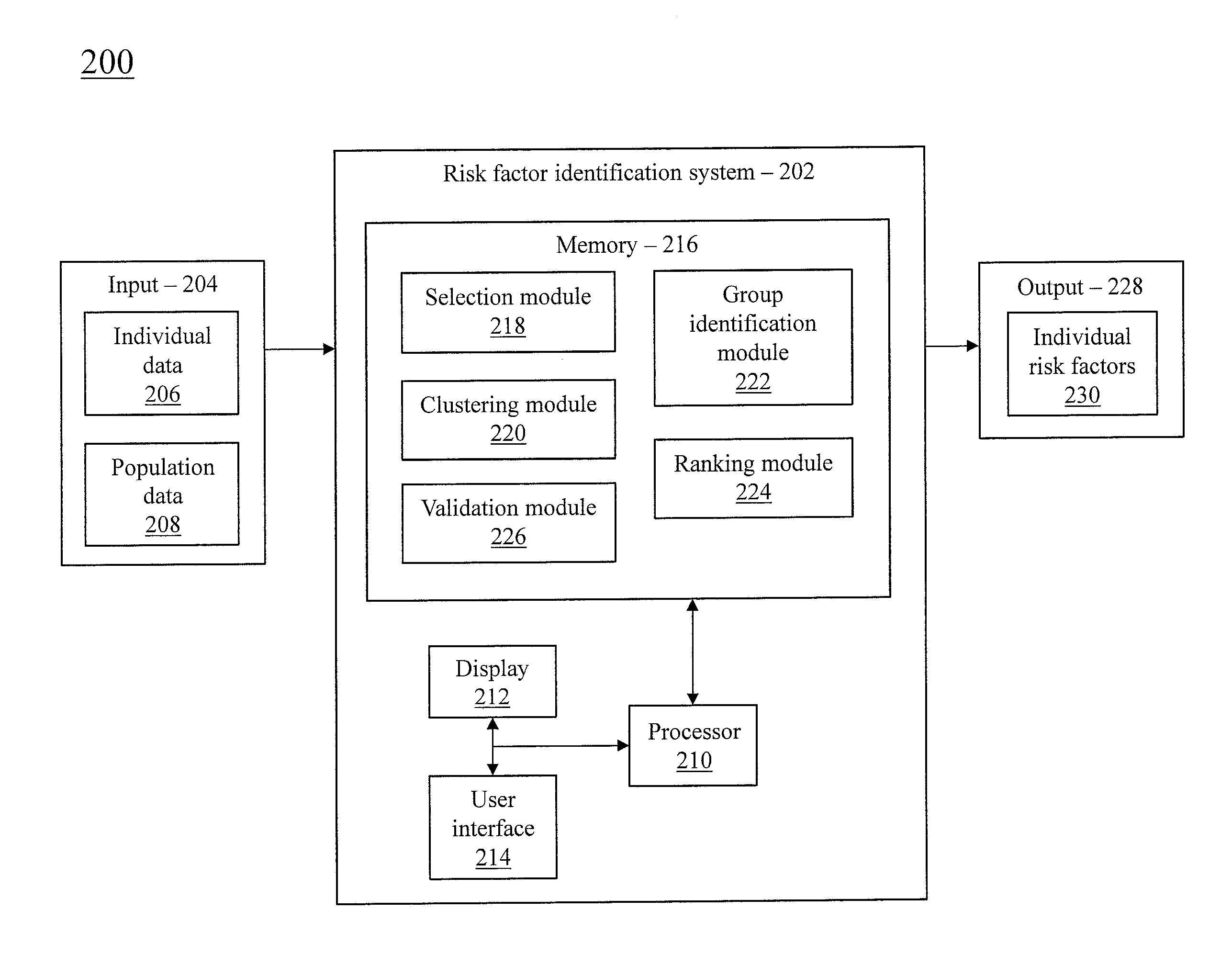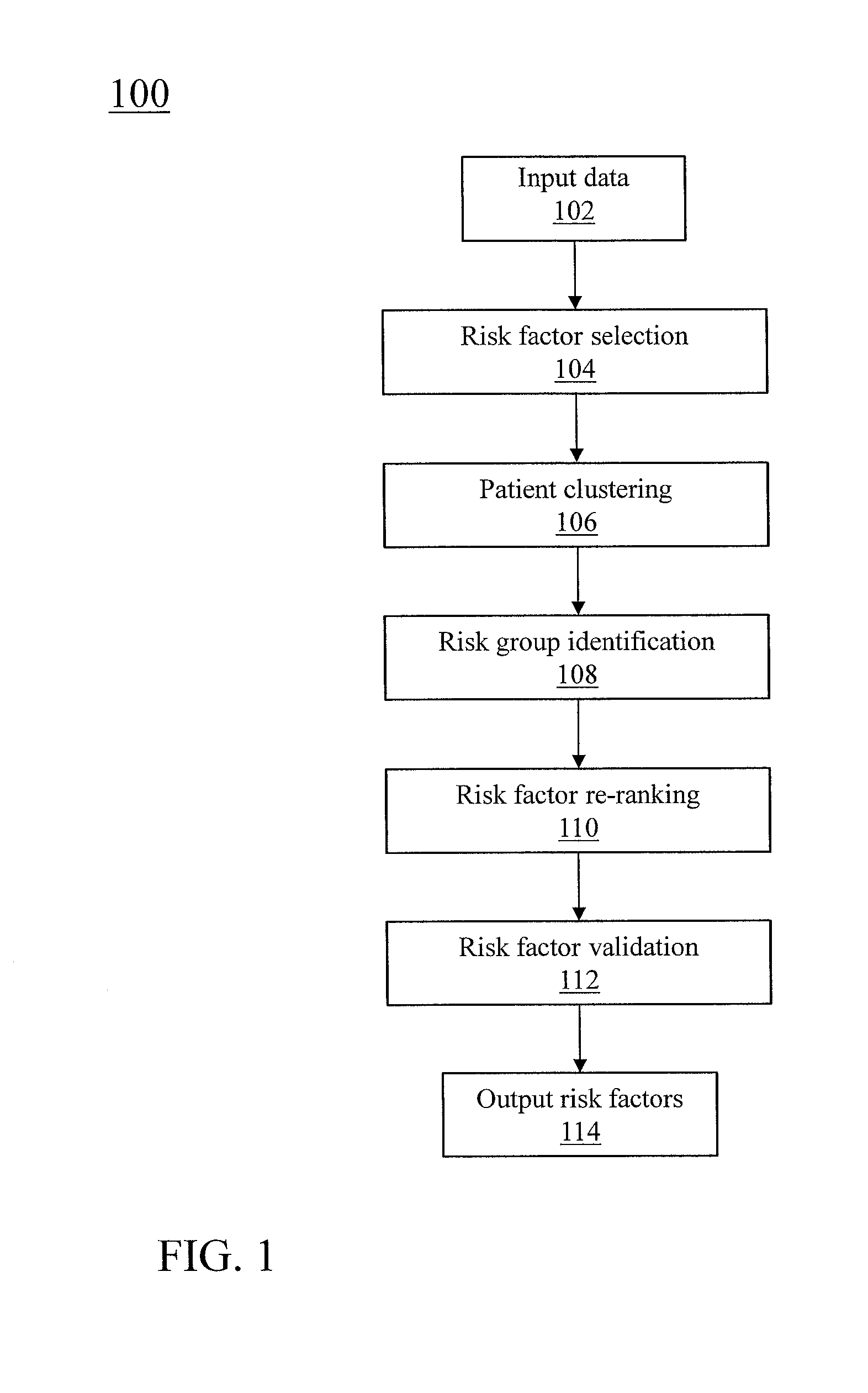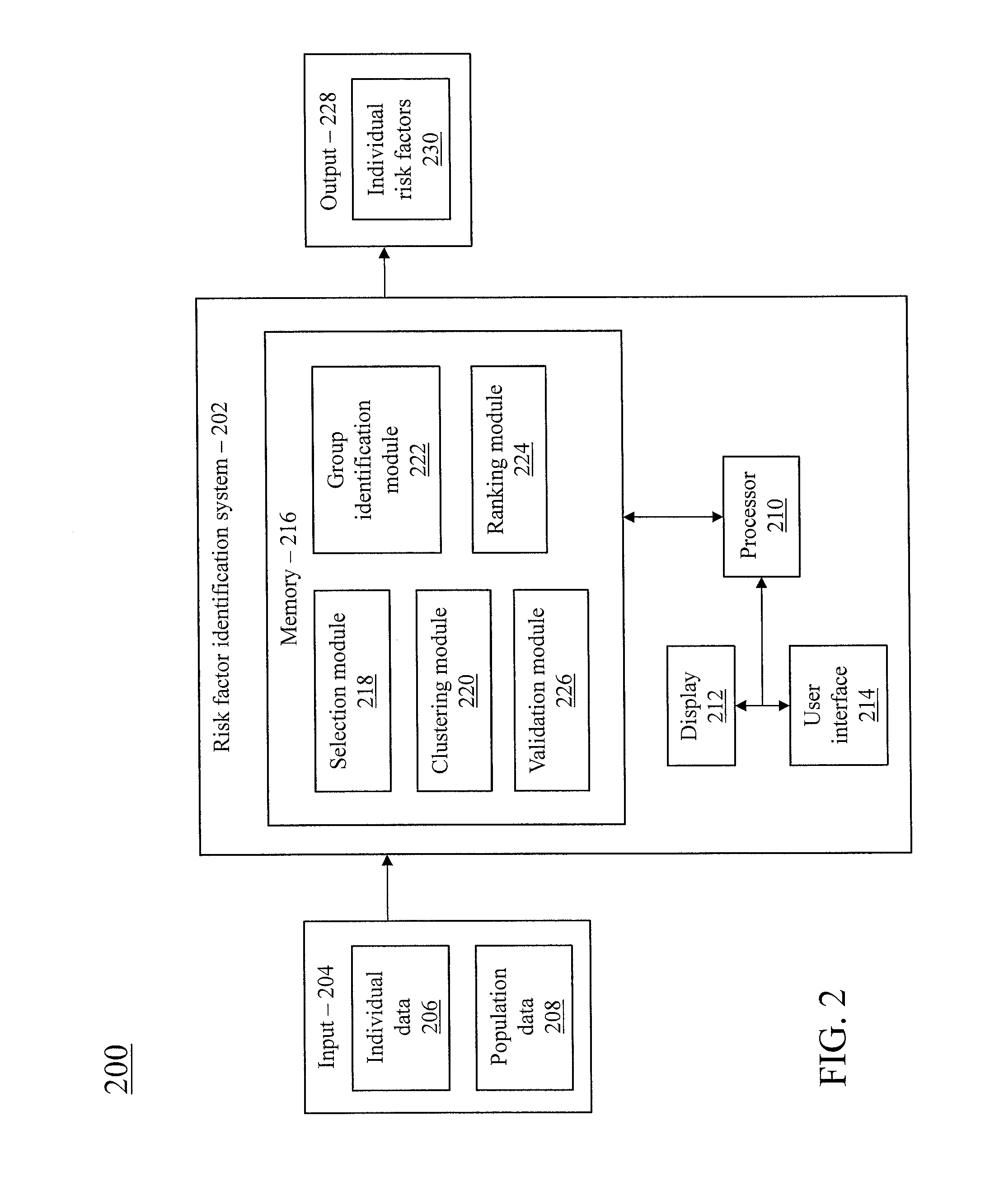Identifying group and individual-level risk factors via risk-driven patient stratification
a risk factor and patient technology, applied in the field of risk factor identification, can solve the problems of only yielding common risk factors by based on general population data, and not addressing individual differences of patients
- Summary
- Abstract
- Description
- Claims
- Application Information
AI Technical Summary
Benefits of technology
Problems solved by technology
Method used
Image
Examples
Embodiment Construction
[0016]In accordance with the present principles, systems and methods for identifying individual-level risk factors are provided. Individual data and population data may be received as input. Individual data may include data for a target group or cluster. In a preferred embodiment, the target cluster is representative of a target individual or patient, e.g., to be treated or examined. Individual data may include, e.g., electronic health records, questionnaire data, genetic information, etc.
[0017]Using population data, common (i.e., global) risk factors for one or more specific risk targets (e.g., diabetes) are identified. Preferably, each risk factor is identified as being positively or negatively correlated with the risk target. Using the identified risk factors, patients from the population data are stratified into clusters. Stratifying patients into clusters may include applying, e.g., hierarchical clustering, k-means clustering, 2-step clustering, etc. Other methods of clustering...
PUM
 Login to View More
Login to View More Abstract
Description
Claims
Application Information
 Login to View More
Login to View More - R&D
- Intellectual Property
- Life Sciences
- Materials
- Tech Scout
- Unparalleled Data Quality
- Higher Quality Content
- 60% Fewer Hallucinations
Browse by: Latest US Patents, China's latest patents, Technical Efficacy Thesaurus, Application Domain, Technology Topic, Popular Technical Reports.
© 2025 PatSnap. All rights reserved.Legal|Privacy policy|Modern Slavery Act Transparency Statement|Sitemap|About US| Contact US: help@patsnap.com



